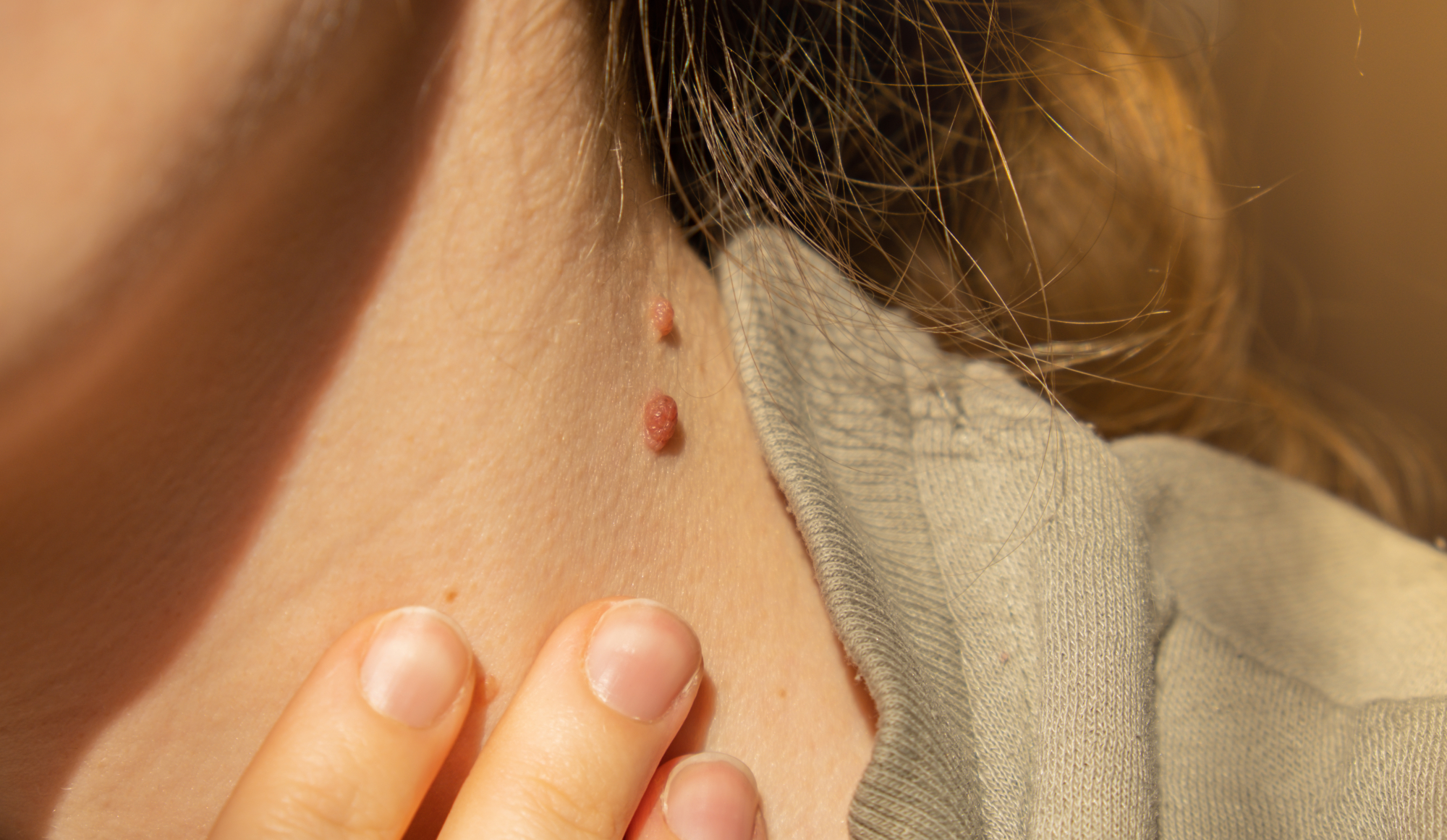
Medically Reviewed by Dr. Lee Hwee Chyen
MBBS MRCP (UK) FAMS (Dermatology)

Skin tags, medically known as acrochordons, are small, soft, skin-coloured growths that develop in skin folds and creases. They are composed of loose collagen fibres and blood vessels surrounded by skin. Skin tags can appear at any age, but they are particularly common during pregnancy due to hormonal changes and other factors.
These skin tags are usually harmless and non-cancerous, but their appearance and size during pregnancy can cause concern.
Pregnant women are more likely to get skin tags due to several causes that reflect the body’s natural response to pregnancy. These include:
Skin tags are generally benign and do not pose a health risk. They do not require treatment and may even fall off on their own after pregnancy when hormone levels return to normal. It is important to differentiate skin tags from other skin growths, such as moles or warts, which may require medical evaluation.
If skin tags become irritated, bleed, or change in appearance, you should consult a medical professional to rule out potential issues.
Skin tags are harmless and dissolve post-pregnancy, but some may choose to have them removed for cosmetic reasons or due to discomfort. Various safe and effective treatment options are available:
Preventing skin tags during pregnancy may not always be possible due to the hormonal and physical changes that occur. There are certain measures can be taken to reduce the likelihood of their development or minimise discomfort:
Opt for loose, breathable fabrics that decrease skin irritation and friction in prone areas.
Keep skin clean and dry, especially in areas where skin folds, that can help prevent irritation.
Apply a safe, pregnancy-appropriate moisturiser to maintain skin elasticity and reduce dryness, potentially minimising skin tag formation.
Treating skin tags can increase comfort and peace of mind during pregnancy. These methods are generally safe and effective for those who opt for removal due to cosmetic preferences or discomfort. Getting advice from a professional helps make informed choices about their removal.